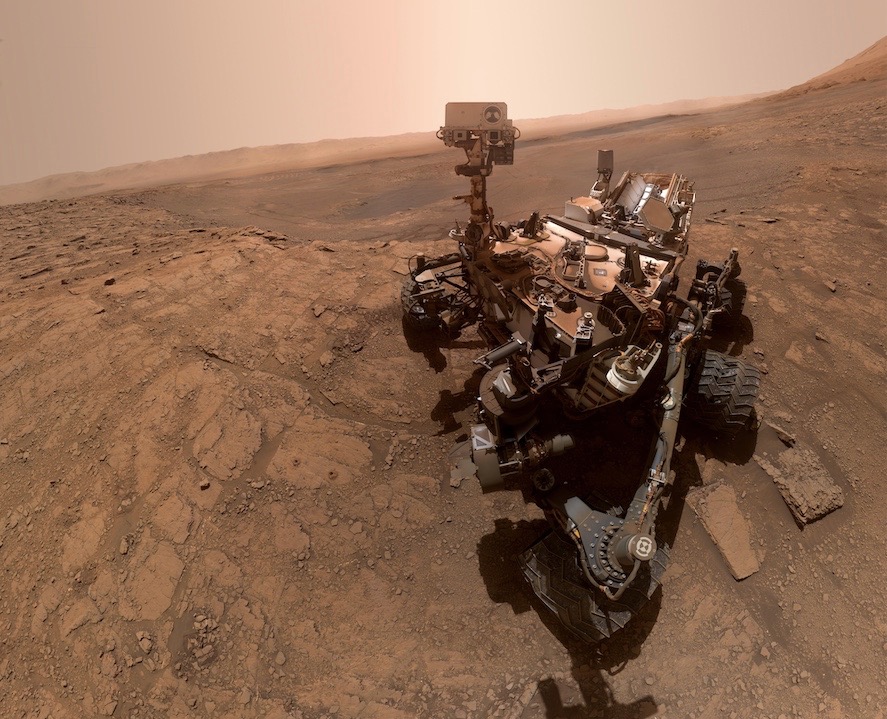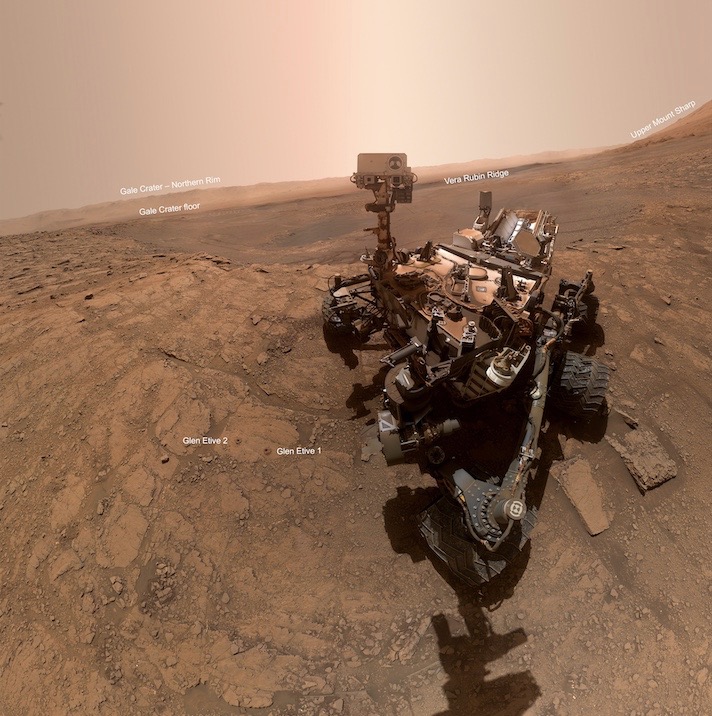Mars Rover Curiosity Snaps Beautiful Selfie After Rare Chemistry Experiment
NASA's Curiosity Mars rover performed some rare science work recently, then took a bit of a break to take in the austere beauty of its surroundings.
On Sept. 24, Curiosity conducted a "wet chemistry" experiment for just the second time ever during its seven years on the Red Planet, dropping a drilled sample into a special solvent that could help the rover identify carbon-containing organic molecules.
The mission team took this step because Curiosity is now exploring an area, dubbed "Glen Etive," that's rich in clay minerals. Clays are good at preserving many chemical compounds, and they're also evidence of the past existence of liquid water.
Related: Amazing Mars Photos by NASA's Curiosity Rover (Latest Images)
"We've been eager to find an area that would be compelling enough to do wet chemistry," Paul Mahaffy, of NASA's Goddard Space Flight Center in Greenbelt, Maryland, said in a statement. "Now that we're in the clay-bearing unit, we've finally got it."
Mahaffy is principal investigator of Curiosity's Sample Analysis at Mars (SAM) instrument, which analyzes the dirt and drilled rock powder that the six-wheeled rover collects as it explores the 96-mile-wide (154 kilometers) Gale Crater.
SAM has 74 cups to accept these samples, most of which are kept dry and then baked in a miniature oven to see what gases boil off. A mere nine cups are reserved for the special wet-chemistry work, so the mission team has been very parsimonious in their use to date.
Breaking space news, the latest updates on rocket launches, skywatching events and more!
Curiosity had previously used a wet cup just once, in December 2016, shortly after the rover's rock-boring drill malfunctioned. Mission team members weren't sure if they were going to be able to fix the drill and do wet chemistry in the future, so they conducted the experiment using some loose sand that Curiosity had scooped up, NASA officials said. (The team managed to fix Curiosity's drill in 2018.)
The results of last month's experiment won't be known until next year, mission team members said.
"SAM's data is extremely complex and takes time to interpret," Mahaffy said. "But we're all eager to see what we can learn from this new location, Glen Etive."
Glen Etive, and the clay-bearing unit, are on the lower slopes of Mount Sharp, the 3.4-mile-high (5.5 km) mountain that rises from Gale's center. Curiosity reached the mountain's base in September 2014 and has been climbing the formation ever since. While doing so, the rover has been characterizing the potentially habitable ancient environment and looking for clues about Mars' long-ago transition from a warm and wet world to the cold, dry desert planet we know today.
Part of Curiosity's upward route is visible in a new selfie that NASA released last week. The picture consists of 57 stitched-together images that the robot captured on Oct. 11 using the Mars Hand Lens Imager (MAHLI), a camera mounted on the end of Curiosity's 7-foot-long (2.1 meters) robotic arm.
For example, about 1,000 feet (300 m) behind Curiosity are the dark contours of Vera Rubin Ridge, which the rover left about a year ago. And beyond the ridge is Gale Crater's floor, which, Curiosity discovered, once harbored a long-lived lake-and-stream system that could have supported Earth-like life in the ancient past.
- Ancient Mars Lakes & Laser Blasts: Curiosity Rover's 10 Biggest Moments in 1st 5 Years
- Ancient Mars Could Have Supported Life (Photos)
- The Search for Life on Mars: A Photo Timeline
Mike Wall's book about the search for alien life, "Out There" (Grand Central Publishing, 2018; illustrated by Karl Tate), is out now. Follow him on Twitter @michaeldwall. Follow us on Twitter @Spacedotcom or Facebook.

Michael Wall is a Senior Space Writer with Space.com and joined the team in 2010. He primarily covers exoplanets, spaceflight and military space, but has been known to dabble in the space art beat. His book about the search for alien life, "Out There," was published on Nov. 13, 2018. Before becoming a science writer, Michael worked as a herpetologist and wildlife biologist. He has a Ph.D. in evolutionary biology from the University of Sydney, Australia, a bachelor's degree from the University of Arizona, and a graduate certificate in science writing from the University of California, Santa Cruz. To find out what his latest project is, you can follow Michael on Twitter.


